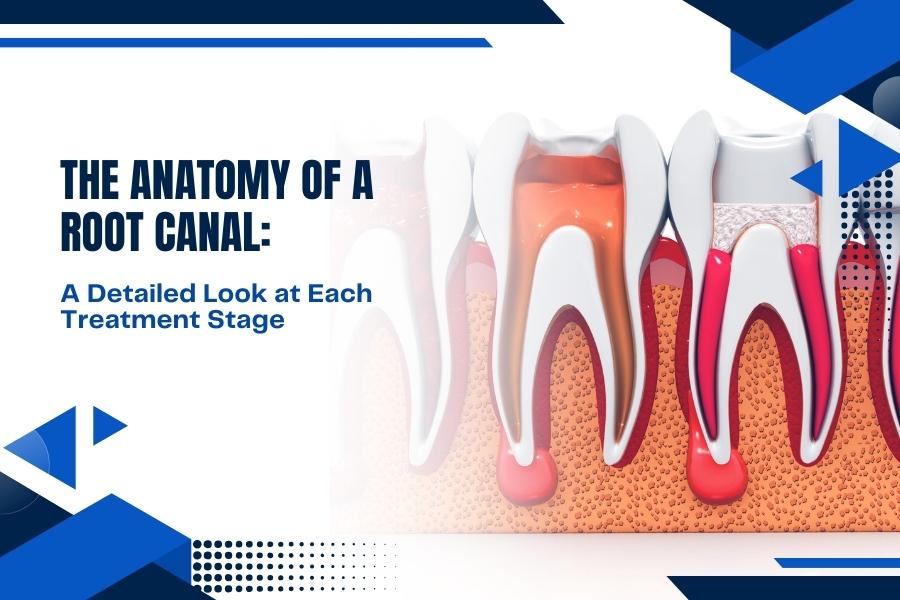
The Anatomy of a Root Canal: A Detailed Look at Each Treatment Stage
A dental operation known as a root canal is performed to treat infected or abscessed teeth
and reduce discomfort. During the root canal treatment, the irritated pulp is removed. The
interior surfaces of the tooth are first cleaned and sterilized. Then a filling is inserted to close
the gap. The pulp is located in the root canal, which runs through the crown and root of the
tooth. Due to their sensitivity to cold and heat, the dental pulp's nerves perceive these
sensations as pain. Our Dental clinic in Mumbai shall examine each stage of the root canal
procedure in-depth in this article.
Importance of Root Canal.
Pulp removal, internal tooth cleaning and disinfection, root canal filling, and crown
application are all steps in the operation. Some of the causes for needing a root canal are
listed below:
● broad decay.
● dental procedures that are repeated on the teeth.
● flawed crown.
● A tooth chip or crack.
● Damage to the tooth.
Pulp inflammation or infection can hurt or result in an abscess if left untreated. Root canal
therapy is intended to clean out the infected root canal, stop the tooth from becoming
reinfected, and preserve the healthy tooth. Each year, root canal treatment treats and saves
millions of teeth, alleviating pain and restoring teeth to health.
Stage 1: Diagnosis
The diagnosing phase of root canal treatment is the initial step. To assess the severity of
the injury, the dentist will inspect the tooth and take an X-ray. The pulp may require root
canal therapy if it is diseased or irritated. The dentist will also look for any indications of gum
swelling or sensitivity.
Stage 2: Cleaning the root canals
Root canal cleaning is the second stage of root canal therapy. The interior of the root canal
will be cleaned out by the endodontist to start the root canal procedure. To get rid of the
infected or irritated pulp, do this. The tooth's surrounding area will be numbed by the dentist
using a local anesthetic. The dentist will cut a tiny hole in the top of the tooth to reach the
pulp cavity once the area has been made numb. The pulp will next be removed from the root
canal by the dentist using little files. Additionally, the dentist will clean the inside of the tooth
using an antibacterial solution.
Stage 3: Obturation
Obturation is the third stage of root canal therapy. Filling the root canal is done in this
manner. The dentist will use gutta-percha, which resembles rubber, to fill the root canal.
After being heated, gutta-percha is inserted into the root canal. The gutta-percha will next be
secured in place by the dentist using a sealer. The dentist will place a temporary filling in the
tooth when the root canal is finished.
Stage 4: Crown insertion
Crown insertion follows root canal treatment as the last step. The tooth will be fragile and
feeble when the root canal procedure is finished. The dentist will cover the tooth with a
crown to safeguard it. The tooth will be supported and shielded by the crown. To
manufacture the crown, the dentist will make a tooth replica and send it to a dental lab. The
dentist will affix the crown to the tooth once it is complete. to read more
Conclusion
An infected or abscessed tooth can hurt, and a simple dental procedure called a root canal
can help. The treatment entails extracting the inflamed or infected pulp from the root canal,
thoroughly cleaning and sanitizing the tooth's interior, filling the root canal with gutta-percha,
and affixing a crown on top of the tooth. Make an appointment at your dental clinic in
Mumbai if you're having discomfort or sensitivity in your teeth. Early detection and treatment
might lessen the likelihood that future dental needs will be more complicated.